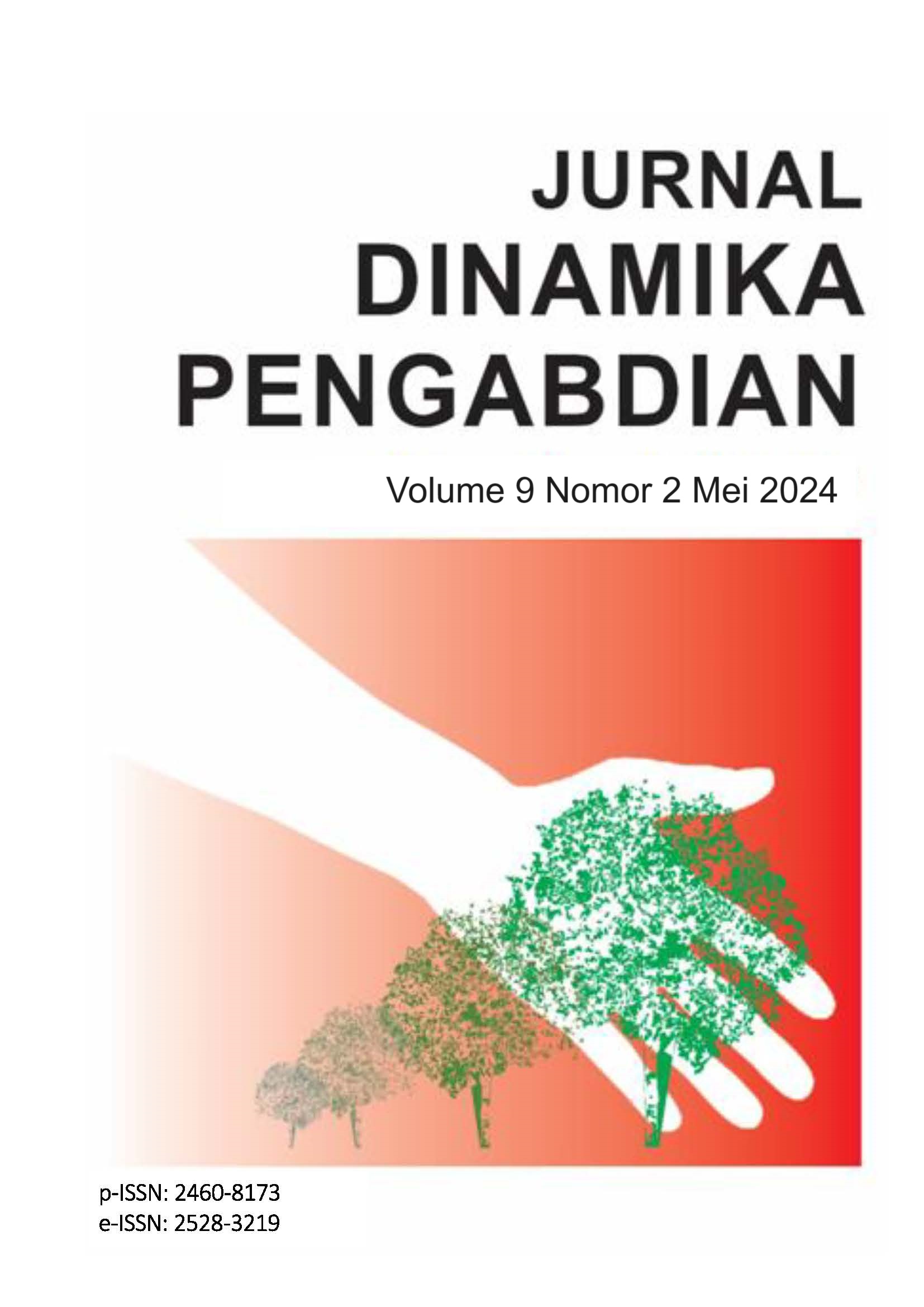PEMBERDAYAAN MASYARAKAT MELALUI PELATIHAN PEMBUATAN OLAHAN CABE RAWIT PADA KELOMPOK TANI “SIPATOKKONG II”, DALAM MENINGKATKAN USAHA PRODUKTIF SECARA EKONOMI DI KELURAHAN TAKKALASI KECAMATAN BALUSU KABUPATEN BARRU
Community Empowerment through Training on Processed Cayenne Pepper Manufacture in the "Sipatokkong II" Farmer Group, in Increasing Economically Productive Businesses in Takkalasi Village, Balusu District, Barru Regency
DOI:
https://doi.org/10.20956/jdp.v9i2.31720Keywords:
Pemberdayaan masyarakat, Cabai rawit, Pengolahan, Pengepakan/packaging, Pemasaran/marketingAbstract
Tujuan dari penelitian ini adalah memberdayakan masyarakat melalui pengolahan cabe rawit di Kelurahan Takkalasi, Kecamatan Balusu, Kabupaten Barru pada kegiatan kemitraan UNHAS (PKM- Pengabdian Masyarakat). Pengabdian ini mempunyai tiga program utama. Program pertama adalah pengolahan cabai rawit menjadi berbagai produk turunan seperti, sambal tuna, sambal teri, sambal petai, sambal daging, sambal udang dan sambal cumi. Program kedua adalah pengepakan/packaging. Pada tahap ini, masyarakat dilatih untuk mengembangkan ide, inovasi dan kreatifitas mereka untuk mendesain model packaging atau kemasan yang mempunyai desain menarik, simple, fungsional dan berkualitas. Program ketiga adalah tahap pemasaran/marketing. Pada fase ini, masyarakat dilatih melakukan dua jenis konsep pemasaran/marketing, yaitu 1. Offline marketing, dengan mempromosikan dan menjual produk olahan cabai rawit di pasar secara langsung dan 2. Online marketing, dengan memperkenalkan produk olahan cabai rawit melalui media online, seperti whatsapp, instagram, dan media online lainnya. Hasil dari penelitian ini menujukkan bahwa ibu ibu petani cabai rawit sangat tertarik untuk mengembangkan kegiatan industri pengolahan cabai rawit dengan membentuk kelompok pengolahan cabai untuk meningkatkan pendapatan petani di Kelurahan Takkalasi. Kata kunci: Pemberdayaan masyarakat, cabai rawit, pengolahan, pengepakan, pemasaran. ABSTRACT The purpose of this study is to empower the community through processing of cundlenut in Takkalasi Village, Balusu Sub-Districts, Barru Districts in the PKM UNHAS. This research has three main programs. The first program is processing red chili pepper into various derivative products such as tuna chili sauce, smoked fish chili sauce, petai chili sauce, meat chili sauce, squid chili sauce, shrimp chili sauce. The second program is packaging. At this stage, the community is trained to develop their ideas, innovations and creativity to design packaging models that have attractive, simple, functional and quality designs. The third program is the marketing phase. In this phase, the community is trained to do two types of marketing concepts, examples 1. Offline marketing, by promoting and selling red chili pepper products in the market directly and 2. Online marketing, by introducing products through online media, such as whatsapp, instagram, and media other online. The results of this study show that farmers are really interested in developing red chili pepper processing industry by forming a red chili pepper processing group to increase farmer income in Barru. Keywords: Community empowerment, red chili pepper, processing, packaging, marketing.Downloads
References
Elevitch, C.R. dan Manner, H.I. 2006 Traditional tree initiative: species profiles for Pacific Islands agroforestry. http://www.agroforestry.net/tti/ Aleurites-kukui.pdf [8 Desember 2010].
Kabupaten Barru Dalam Angka 2017 http://barrukab.go.id/investasi/pertanian-perkebunan.
Pomeroy, Robert S., William Meryl J. 1994. Fisheries Co-Management and Small-Scale Fisheries: A Policy Brief. Manila: ICLARM
Scott, S. dan Craig, T. 2000 Poisonous plants of paradise: first aid and medical treatment of injuries from Hawaii’s plants. University of Hawaii Press, Honolulu, Hawaii, AS.
Widodo J, Suadi. 2006. Pengelolaan Sumberdaya Perikanan Laut. Yogyakarta. Gadjah Mada University Press. 252 hal
Downloads
Published
How to Cite
Issue
Section
License
Copyright (c) 2024 Jurnal Dinamika Pengabdian

This work is licensed under a Creative Commons Attribution 4.0 International License.
Penulis diwajibkan untuk menandatangani "Surat Perjanjian Hak Cipta" atau Copyright Agreement untuk penyerahan ijin kepada pihak jurnal untuk menerbitkan tulisannya.
Authors are required to sign a "Copyright Agreement" to submit permission to the journal to publish their writings.









